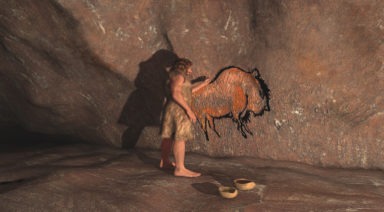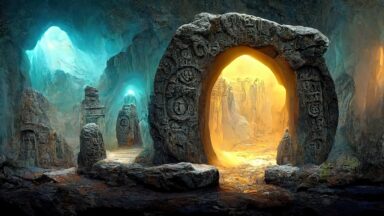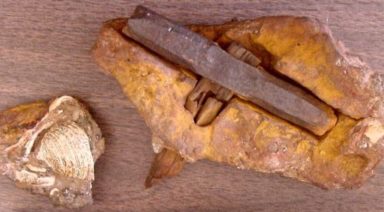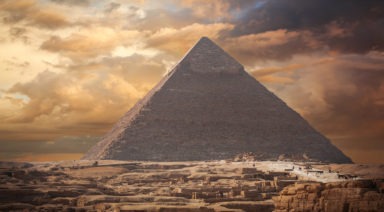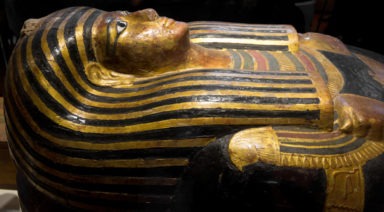What is the Tower of Babel?

According to the famed parable in Genesis, the Tower of Babel was a structure designed to be tall enough to reach the heavens. This was much to God’s dismay, so as a consequence, he thwarted their plans by confusing their language and scattering the people around the world.
While there are similar stories from other cultures, the Genesis tale is perhaps the most well-known version. Is it merely a Bible parable, or is there some truth behind the story of the famed tower?
Location of the Tower of Babel
According to this particular story, the tower was built in a place called Shinar. While no one can be sure of its exact location, it’s generally believed Shinar was Babylonia, somewhere in Mesopotamia.
Evidence of the Tower of Babel
Aside from depictions in the Bible and similar stories, there had never been any evidence for the Tower of Babel’s existence until the discovery of a clay tablet in Iraq.
The tablet dates back to around 600 BCE and depicts the seven tiers of a ziggurat, along with a portrait of King Nebuchadnezzar II. The text is the most notable aspect of the tablet, which reads:
“NEBUCHADNEZZAR, KING OF BABYLON AM I – IN ORDER TO COMPLETE E-TEMEN-ANKI AND E-UR-ME-IMIN-ANKI I MOBILIZED ALL COUNTRIES EVERYWHERE, EACH AND EVERY RULER WHO HAD BEEN RAISED TO PROMINENCE OVER ALL THE PEOPLE OF THE WORLD – LOVED BY MARDUK, FROM THE UPPER SEA TO THE LOWER SEA, THE DISTANT NATIONS, THE TEEMING PEOPLE OF THE WORLD, KINGS OF REMOTE MOUNTAINS AND FAR-FLUNG ISLANDS – THE BASE I FILLED IN TO MAKE A HIGH TERRACE. I BUILT THEIR STRUCTURES WITH BITUMEN AND BAKED BRICK THROUGHOUT. I COMPLETED IT RAISING ITS TOP TO THE HEAVEN, MAKING IT GLEAM BRIGHT AS THE SUN”
The text explicitly states that Nebuchadnezzar spearheaded the initiative to build the tower, assembling people from around the world to construct it. The tower is referred to as “E-Temen-Anki” (often stylized as “Etemenanki”).
Etemenanki
Etemenanki is an ancient tower local inhabitants have long suspected to be the remains of the Tower of Babel, but there had been no evidence to support this theory until the discovery of the aforementioned clay tablet. The site was rediscovered in the 19th century by the local population and excavated in 1913 by Robert Koldewey.
Today, only some of the remains of Etemenanki are visible as much of the site is overgrown. However, it is believed to have been originally about 91 meters tall.
Tower of Babel: Fact or Fiction?
One can argue the story of the Tower of Babel isn’t entirely incredulous. People around the world built towering structures to honor their respective gods for centuries. The pyramids of Egypt, Teotihuacan, Chichen Itza, and similar structures throughout the world are all notable examples, along with the slew of towering temples scattered worldwide.
With this in mind, the idea of people collaborating to build a tower with the goal of reaching the heavens doesn’t seem that far fetched. Combine this with the evidence of Etemenanki, and there is quite a strong case for the existence of the Tower of Babel; however there always room for exploration.
Want more like this article?
Don’t miss Ancient Civilizations on Gaia to journey through humanity’s suppressed origins and examine the secret code left behind by our ancestors.
New Study of Cave Paintings Say Ancient Man Understood Astronomy

A reinterpretation of one of the world’s most famous primitive cave paintings seems to show our ancient ancestors had a much stronger grasp on astronomy than we’ve given them credit. According to a recent study, cave paintings in France depict animals that represent the constellations, showing the artists who drew them were aware of the precession of the equinoxes — a discovery not thought to have been made before Hipparchus of Ancient Greece.
Of the paintings in question, researchers Martin Sweatman, Ph.D., and Alistar Coombs studied an image titled, “The Shaft,” which portrays a collapsing bird-headed man, a bison eviscerated by a spear, a horse, and a rhinoceros in the Lascaux caves of southern France’s Dordogne region.
In the past, this scene was interpreted as a shamanic ceremony or the scene of a hunt, however the exact meaning has been widely disputed as depictions of men were incredibly uncommon in this era. But according to Sweatman and Coombs’ latest study, the paintings show not only a more primordial understanding of astronomy, but also religion, science, and mathematics.
By comparing radiocarbon dating of paint samples to the position of constellations in the sky when the art was created, the researchers were able to match specific animals with correlating constellations of the solstice and equinox. They used this same method at similar archeological sites, including the ruins of Göbekli Tepe and Catalhöyük, as well as the famous cave art of Chauvet and Altamira.
The two also said they believe the Lascaux paintings commemorate a comet striking Earth, correlating with what they believe to be the cataclysmic impact event that marked the beginning of the Younger Dryas period – evidence of which was recently found in the form of a 19-mile wide crater beneath a Greenland ice sheet.
In addition to these sites, the researchers incorporated the Lion-man figurine from the Hohlenstein-Stadel cave in Germany, which dates back 38 thousand BCE and is considered to be the world’s oldest sculpture – they believe it too, may be evidence of zodiacal awareness. Their study was published in the Athens Journal of History.
Like any bold claim made of early humans which challenges long-held archeological timelines, this latest theory has unsurprisingly sparked controversy with some of Sweatman and Coombs’ colleagues who have labeled their method flawed.
According to their model, prehistoric men from the Stone Age discovered the precession of the equinoxes some 36 thousand years before Hipparchus – a bold claim to say the least!
But findings such as this seem to continually piece together disparate pieces of a puzzle that modern archeology has glossed over or ignored entirely. And as Graham Hancock likes to say upon the discovery of new paradigms like this may be, “things just keep getting older.”
For more on the anomalous archeological finds cluing us into our forgotten past, check out this episode of Disclosure with Graham Hancock:


